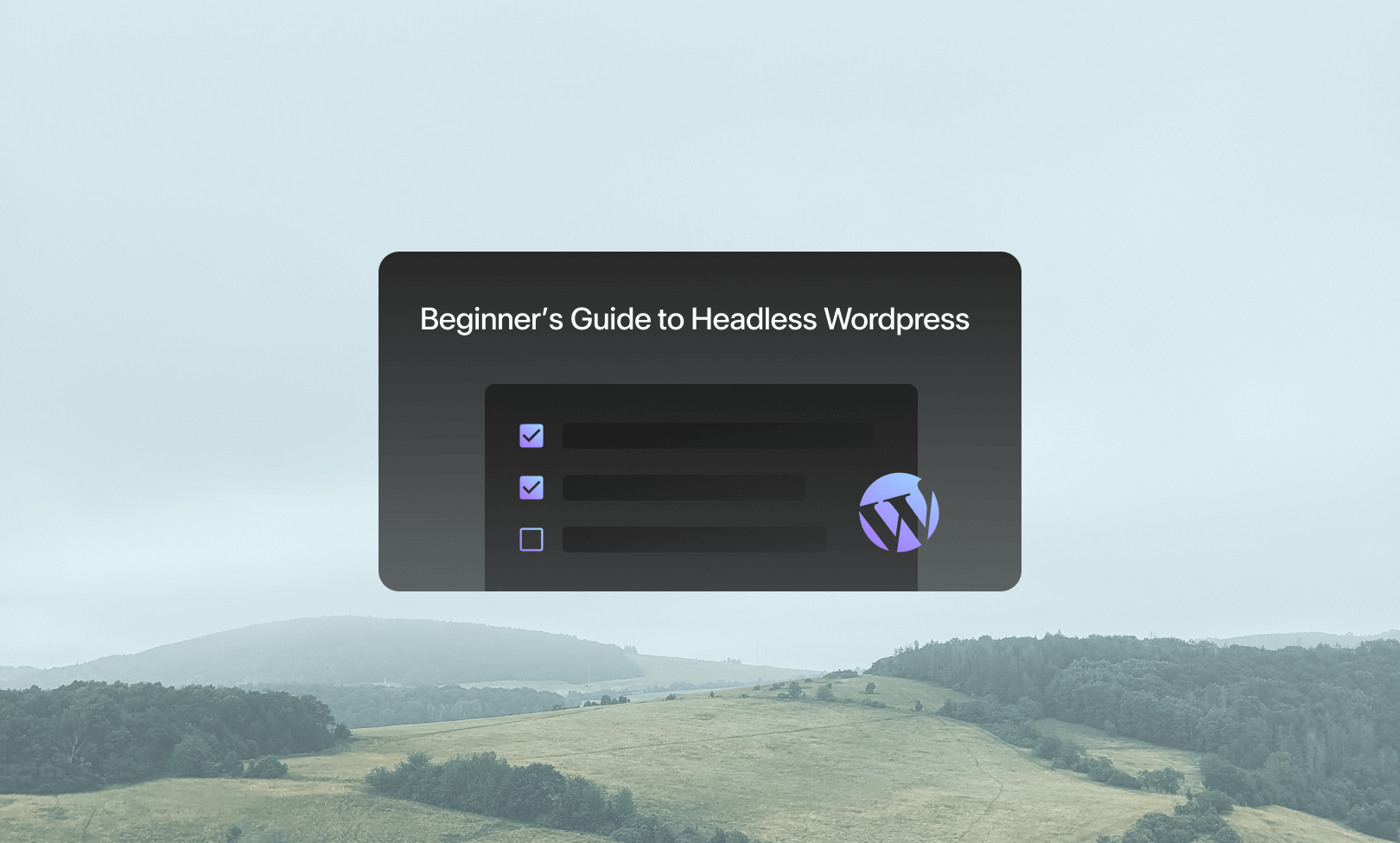A Beginner's Guide To Headless WordPress
Intrigued by headless WordPress? Perhaps you’ve heard rave reviews from people claiming it’s the best thing since sliced bread. Or perhaps you’re simply curious about its slightly gruesome name.
Well, you’ve come to the right place! This post is going to serve as a simple overview of Headless WordPress. We’ll explore what it is and how it works without getting too bogged down in technical jargon.Still, we’ll also explain any terminology you need to know.
What is a CMS?
Headless WordPress is a type of Headless CMS. To understand what Headless is, we first need to understand what a CMS is.
CMS stands for Content Management System. It’s essentially just a tool for uploading and editing content for a site, whether that’s uploading text posts or changing the entire layout.
Some examples of CMSs include WordPress, Squarespace, Wix, and Sitecore.
CMS Architecture
“Headless” is a type of CMS architecture. CMS architecture refers to the way the elements of a CMS are arranged.
A website consists of two core components: the back-end and the front-end. These are sometimes referred to as “client-facing” and “server-facing.”
The front-end is where content is displayed. Essentially this is everything that you see and interact with in your browser.
The back-end is where content gets stored and managed. It’s everything that you don’t see. The back-end consists of the servers, databases, and applications that power the site.
To give a simple example of how these work, let’s say you’re writing a blog post in WordPress. Once you post it, it is stored in your website’s back-end database as lines of text and code.
When someone clicks a link to that post, the browser sends a request to the server. The server fetches the post from the database and sends it to the browser, where it is assembled into what the user sees on their screen.
What does Headless mean?
Ok, so now that we’ve got all that out of the way, we can finally start talking about Headless!
In a “traditional” CMS like WordPress, the front and back-ends are linked together, so you can manage your site’s front and back-ends from the same place. This is also known as a “Coupled” or “Monolithic” CMS and serves as an all-in-one solution for content management, website design, and development.
“Headless” refers to the lack of a defined “head” or front-end. In a Headless CMS, the front-end and back-end are separated, so the content management and storage are not connected to a defined presentation layer.
This means that content is stored in one place and can be pushed to any medium, for example the same content can be sent to a website and a mobile app. You can think of Headless WordPress as being like a Swiss army knife: providing access to multiple tools from the same place.
What Is Headless WordPress?
While WordPress is not natively a Headless system, it can be used as one. Basically, this means that content is managed and stored in WordPress and then displayed to users through a separate front-end.
Benefits of Headless WordPress
Native WordPress comes with built-in limitations which can be restrictive to developers and even hinder a site’s performance.
Headless gives you the freedom to design your own presentation layer, bypassing many of the drawbacks of monolithic WordPress and creating a faster and lighter website. This developer freedom also means you can get a lot more creative with your site design.
One of the biggest perks of Headless WordPress is that you’ll still use the WordPress back-end for managing and delivering content. Since WordPress is the most commonly used CMS in the world, most people are already familiar with it. This means that companies can make the switch to Headless without having to train their content creators in a new CMS.
Other benefits of Headless WordPress include:
- Enhanced security
- Easy scalability
- Multi-channel publishing
A Whole New WordPress
Headless WordPress opens up a host of new features and possibilities, changing the way you can use the world’s most popular CMS.
With the constant evolution of the online sphere, digital brands need to manage an increasingly agile output across devices and platforms. Headless WordPress, with its capacities for speed, flexibility, and scalability, has emerged as one of the preferred solutions for companies looking to expand their online presence.
Book a 30-min Introduction Call
Let's jump on a quick intro call We'll break down your project, and pinpoint exactly how we can help.



Our clients  Holaa! love working with us see their stories below!
Holaa! love working with us see their stories below!






